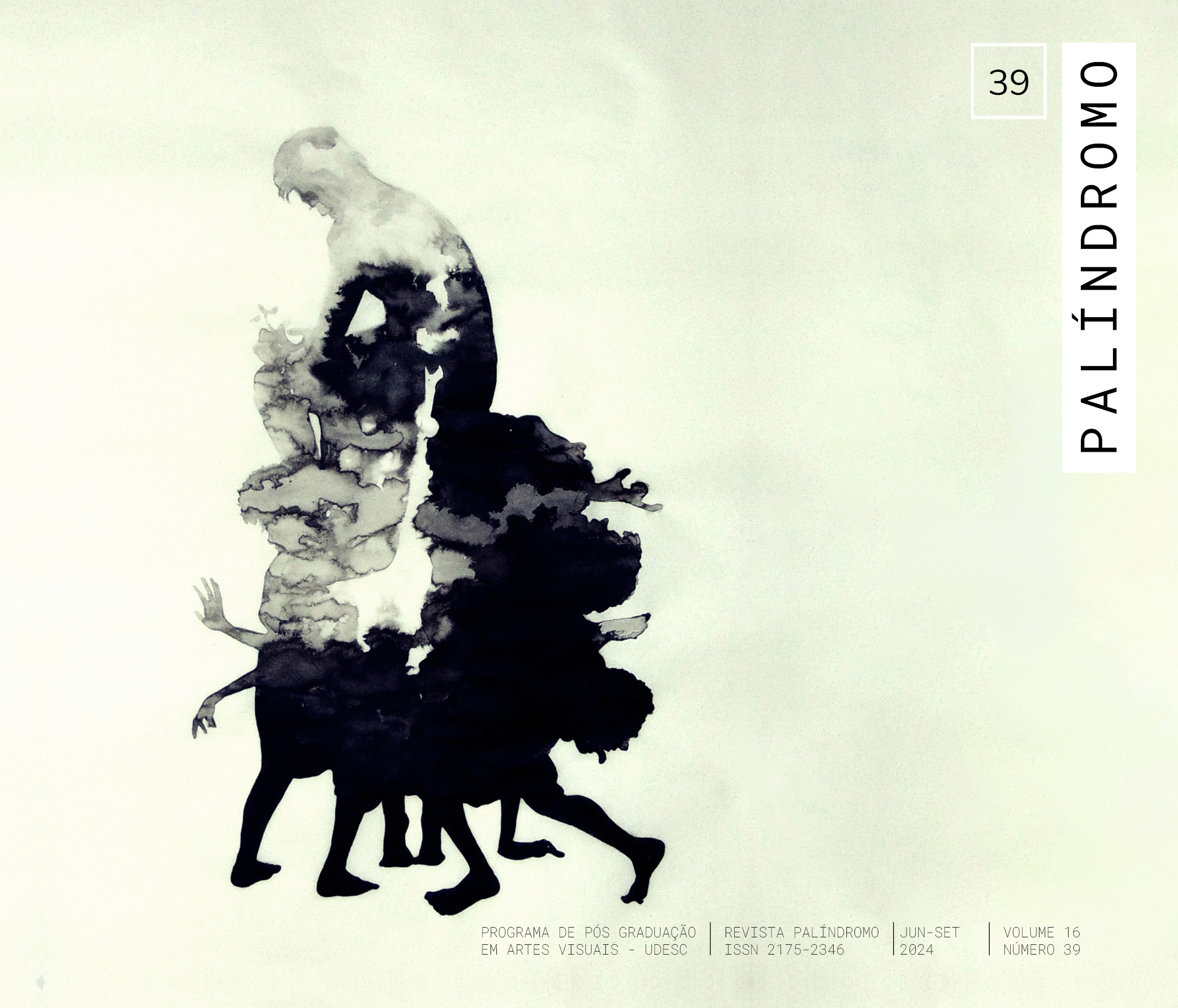Fogo, destruição e criação: a arte de Anselm Kiefer e a filosofia de Andrea Emo
DOI:
https://doi.org/10.5965/2175234616392024e0010Parole chiave:
Anselm Kiefer, Andrea Emo, Iconoclastia, arte e naturezaAbstract
A partir de uma questão ambiental sobre o problema das queimadas no Brasil, trata-se, neste artigo, da correlação entre destruição e regeneração na natureza e na arte. Levando em conta tragédias causadas pelo fogo que, ao longo da história, arruinaram o patrimônio histórico e artístico, serão analisadas as afinidades existentes entre um artista e um filósofo. De um lado coloca-se Anselm Kiefer, com destaque para as pinturas produzidas para uma exposição no Palazzo Ducale de Veneza, local acometido por um grande incêndio em 1577; de outro, o pensamento de Andrea Emo, autor recentemente redescoberto. Como será demonstrado, a noção de que as imagens nascem de gestos iconoclastas apresenta-se aqui como parte central de um programa em que destruição e criação se fundem e se manifestam por toda parte.
Downloads
Riferimenti bibliografici
BALZAC, Honoré de. Le chef d’œuvre inconnu. In: Œuvres illustrées de Balzac. Paris: MM. Marescq / J. Bry Ainé, 1851.
BELLI, Gabriella; SIRÉN, Janne (a cura di). Anselm Kiefer. Palazzo Ducale Venezia. Questi scritti, quando verranno bruciati, daranno finalmente un po’ di luce (Andrea Emo). Venezia: Marsilio, 2022.
BRANDI, Cesare. Teoria da restauração. São Paulo: Ateliê Editorial, 2004.
DVOŘÁK, Max. Catecismo da preservação de monumentos. São Paulo: Ateliê Editorial, 2008.
EMO, Andrea. Aforismi per vivere. Tutte le parole non dette si ricordano di noi. Milano-Udine: Mimesis, 2007.
EMO, Andrea. Il dio negativo. Scritti teoretici (1925-1981). Venezia: Marsilio, 1989.
EMO, Andrea. In principio era l’immagine. Firenze / Milano: Giunti / Bompiani, 2019. E-book.
EMO, Andrea. Supremazia e maledizione. Diario filosofico 1973. Milano: Raffaello Cortina, 1998.
GAMBONI, Dario. The destruction of art. Iconoclasm and vandalism since the French Revolution. London: Reaktion Books, 2018.
KIEFER, Anselm. L’arte sopravvivrà alle sue rovine. Milano: Feltrinelli, 2018. E-book.
KIEFER, Anselm. L’art survivra à ses ruines. Nouvelle édition [en ligne]. Paris: Collège de France, 2011. Disponível em http://books.openedition.org/cdf/386, acesso em 29 jan. 2024.
LEONEL, Mauro. O uso do fogo: o manejo indígena e a piromania da monocultura. Estudos Avançados, v. 14, n. 40, p. 231-250, 2000.
LOBATO, Monteiro. Urupês. São Paulo: Globo, 2007.
MEGGERS, Betty J. Amazônia: a ilusão de um paraíso. Belo Horizonte / São Paulo: Itatiaia / Edusp, 1987.
RAGAZZI, Alexandre. O limite da pintura ou onde estão os tempos sombrios. In: Anais do 41º Colóquio do Comitê Brasileiro de História da Arte: Arte em tempos sombrios. São Paulo: CBHA, 2022, p. 397-406.
RIBEIRO, Berta G. Os índios das águas pretas: modo de produção e equipamento produtivo. São Paulo: Companhia das Letras / Edusp, 1995.
RIDOLFI, Carlo. Delle maraviglie dell’arte, overo delle vite degl’illustri pittori Veneti e dello Stato. 2v. Venetia: Gio. Battista Sgava, 1648.
RIEGL, Alois. O culto moderno dos monumentos. A sua essência e a sua origem. São Paulo: Perspectiva, 2014.
SELLARS, John. Stoicism. Berkeley / Los Angeles: University of California Press, 2006.
VIOLLET-LE-DUC, Eugène. Dictionnaire raisonné de l’architecture française du XIe au XVIe siècle. T. VIII. Paris: Morel, 1866.
Downloads
Pubblicato
Come citare
Fascicolo
Sezione
Licenza
Copyright (c) 2024 Alexandre Ragazzi

TQuesto lavoro è fornito con la licenza Creative Commons Attribuzione 4.0 Internazionale.
DECLARAÇÃO DE DIREITOS AUTORAIS
a. Os artigos publicados pela revista são de uso gratuito, destinados a aplicações acadêmicas e não comerciais. Todos os direitos autorais são atribuídos à revista. Os artigos cujos autores são identificados representam a expressão do ponto de vista de seus autores e não a posição oficial da Revista Palíndromo. O (s) autor (es) compromete-se sempre que publicar material referente ao artigo publicado no Palíndromo mencionar esta publicação da seguinte forma:
Este artigo foi publicado originalmente pela revista Palíndromo em seu volume (coloque o volume), número (coloque o número) no ano de (coloque o ano) e pode ser acessado em: http://www.revistas.udesc.br/index.php/palindromo
b. Plágio, em todas as suas formas, constitui um comportamento antiético de publicação e é inaceitável. A revista Palíndromo utiliza o software iThenticate de controle de similaridade


